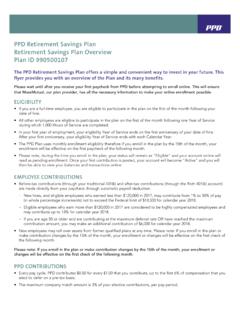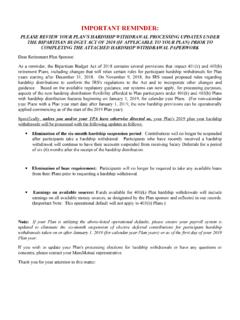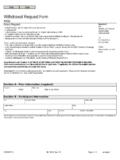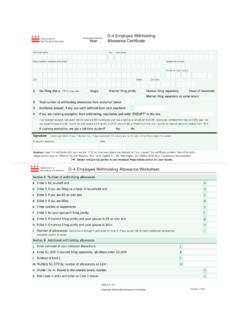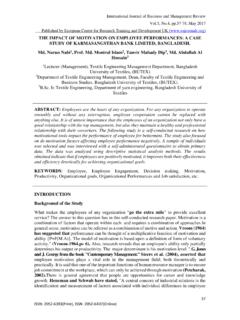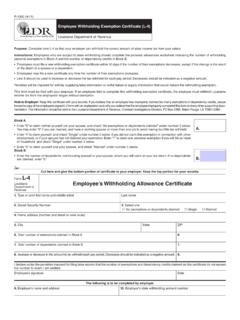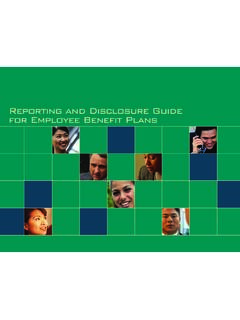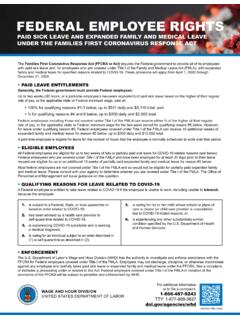Transcription of How to Correct Missed or Late Contributions (Employee and ...
1 2012 Massachusetts Mutual Life Insurance Company. All rights reserved. MassMutual Financial Group is the fleet name for Massachusetts Mutual Life Insurance Company (MassMutual) [of which Retirement Services is a division] and its affiliated companies and sales representatives. RS4153 309C: -22616-00 How to Correct Missed or Late Contributions ( employee and /or Employer) During the course of operating a retirement plan, operational mistakes occur occasionally that need to be corrected. Two common ones that occur are Missed Contributions and late deposit of employee Contributions (pre-tax and after-tax). Both the Treasury Department and the Department of Labor have addressed these issues and have provided guidance on how to Correct these errors. This guidance applies to defined contribution plans and those defined benefit plans that have employee Contributions . The purpose of this paper is to provide an overview of the correction methods for the contribution errors noted above.
2 Corrections available for Missed or late catch-up Contributions or Roth Contributions are not addressed here. In addition, the employer Contributions that we discuss in this article are limited to Missed employer matching or discretionary Contributions . Missed Contributions : EPCRS Guidance IRS Revenue Procedure 2008-50 sets forth the procedures for correcting various plan errors under the IRS employee Plans Compliance Resolution System. EPCRS includes procedures for correcting plan related problems through self-correction or filing a voluntary application with the IRS. Generally, Missed employee Contributions result when an employee is not allowed to defer in accordance with the provisions of the plan document. In that case, EPCRS requires the plan sponsor to take certain steps to restore the participant s account to the position he/she would have been in had the error not occurred.
3 The plan sponsor is required generally to make up for the Missed deferrals or after-tax Contributions , any related match and any other employer Contributions . In addition, making the participant whole requires the plan sponsor to make a deposit into the plan, on the participant s behalf, which represents the earnings (or interest) related to these Missed employee Contributions . When a participant is improperly excluded (or not allowed to defer or make an after-tax contribution on some portion of compensation) from the plan, the correction to make the participant whole generally involves a make-up contribution for the amount the employee would have made had she or he been properly included in the plan, adjusted for earnings from the date the elective/after-tax Contributions should have been made through the date of the corrective contribution. For an employee who was improperly excluded from plan participation, the employer needs to enroll the employee into the plan.
4 For salary deferrals, the lost opportunity cost for the participant is a contribution that is 50% of the Average Deferral Percentage (ADP) of the employee s class (Non Highly Compensated employee or Highly Compensated employee ). The corrective matching contribution is based on the full amount of deferrals (ADP) for the applicable class, not the 50% lost opportunity cost applicable to salary deferrals. And, the employer contribution would need to include earnings. For after-tax Contributions , the correction is based on a different lost opportunity cost, namely, 40% of the after-tax Contributions the employee would have made had the employee been timely included in the plan, plus the related earnings. This amount is equal to the employee s compensation multiplied by the Average Contribution Percentage (ACP) for the applicable class. The applicable ACP in this calculation may be limited to the portion of the ACP that is attributable to after-tax employee Contributions (excluding matching Contributions ).
5 If the employer made discretionary Contributions , the plan sponsor would contribute the same percentage of the omitted compensation as was contributed with respect to the compensation that was properly included, plus earnings through the date of correction. When the participant had been making deferrals but was not allowed the benefit of a full deferral (for example, deferral was not withheld on the bonus), he or she would be entitled to a contribution based on 50% of the elected deferral percentage plus 100% of any related corresponding employer Contributions (match, profit sharing ) plus the related earnings. For example, if the participant elected to have 3% deferred from his or her compensation, then the employer would make up 50% of this deferral ( , ) and would make up 100% of the match. The corrective match is based on 100% of the participant s deferral election ( , 3%) or 100% of the ADP if the participant had no election.
6 The employer would also make up any other employer Contributions that may have been Missed . The employee is also entitled to earnings for this loss period during the time the employee and employer Contributions were omitted. The loss period starts with the date the participants should 2have received the first contribution and ends on the date the actual corrective contribution was made. These earnings are calculated based on either: (1) the actual investments selected by the participant (assuming he/she has a plan account); or, if this is not possible, based on the highest earning fund in the plan for each plan year the omission occurred. This is a general discussion of the correction principles and methods available under EPCRS for plan operation failures related to Missed or late Contributions . Revenue Procedure 2008-50 provides a more complete description of the requirements and applicability of the EPCRS program.
7 Late Deposit of employee Contributions (Deferrals, After-Tax) The Department of Labor (DOL) is responsible for ERISA enforcement and maintains authority over the correction method for the late deposit of employee Contributions (deferrals, after-tax), with guidance outlined in their Voluntary Fiduciary Compliance Program (VFCP). Regulations generally require an employer to deposit elective deferrals on the earlier of: (1) the earliest date the employer could have segregated the deferrals from its own funds; or, (2) the 15th business day of the month following the month the employer withheld the deferrals. The DOL interprets the regulations to require deposit on the earliest reasonable segregation date but never later than the 15th business day of the next month. For example, if the employer could reasonably have segregated the funds within 4 days of withholding them from the participants pay, then the maximum deposit period would be 4 days.
8 Small plans (those with less than 100 participants) are generally allowed a seven-day safe harbor for deposits. Form 5500, Annual Return/Report of employee Benefit Plan, requires the plan sponsor to answer a question disclosing if there have been any employee Contributions that were deposited late during the plan year. When this question is answered Yes, an attachment must be provided that asks whether these late deposits have been corrected, and, if yes, details about the correction method must be provided as well. Participant loan repayments withheld by the employer from the participants pay that were not transmitted timely are included within the scope of these Form 5500 questions. If the delinquent participant Contributions reported on Form 5500 for Year 1 is not corrected until Year 2, then the total amount of delinquent Contributions is carried over from Year 1 and reported again for Year 2 s Form 5500 The late deposit of Contributions withheld from participants pay can result in a prohibited transaction and a breach of fiduciary duty that must be corrected by making up the employee Contributions plus the lost earnings on the late deposit(s).
9 The DOL provides a calculator on their website ( ) for calculating lost earnings. To Correct the prohibited transaction, the employer must file Form 5330 (Return of Excise Taxes Related to employee Benefit Plan) and pay an excise 3 4tax on the value of the amount involved. The amount involved for the late deposit of employee Contributions is the amount of earnings. If the employer files an application (no filing fee) with the DOL VFCP and satisfies certain conditions, the employer is exempted from paying the excise tax and does not have to file Form 5330. This document is for informational purposes only and should not be construed as legal and/or tax advice. Please consult your own advisor regarding the specific application of the information set forth herein to your own plan.
![[Date] [Participant Name Participant Address1 ... - …](/cache/preview/e/a/0/0/7/6/a/2/thumb-ea0076a202f1d17c096e491d07912c43.jpg)
